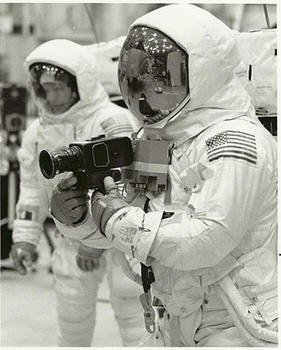
What was once unfathomable became reality on July 20, 1969: astronauts landed on the moon. About 600 million people around the world watched live on television, transfixed as three Americans (two of whom stepped on the moon) ventured into uncharted territory and took “one giant leap for mankind.”
“When Neil Armstrong took his first steps and said those memorable words, I felt like I was there with him,” said Mason professor and NASA planetary scientist Michael Summers, who was 14 years old when the landing occurred.
He remembers crying as the spacecraft descended and laughing as the astronauts landed on the moon’s surface. “It was a thrill like nothing I had ever experienced,” said Summers, a co-investigator on NASA’s New Horizons mission.
Humanity’s first lunar landing, which became a triumph for the United States in technology and space exploration, also inspired an entire generation to chase their dreams and believe in the “impossible.”
“What NASA and the Apollo 11 astronauts did was show me that reality was bigger than science fiction,” said Summers, who added that both inspired him to pursue a space career. “Space exploration shows us that we are capable of great things—sometimes things almost too great to imagine.”
In honor of the 50th anniversary of the galactic feat, members of the George Mason University community—faculty at the College of Science, space explorers and alumni at NASA—share their memories of the milestone, and what it means to them.
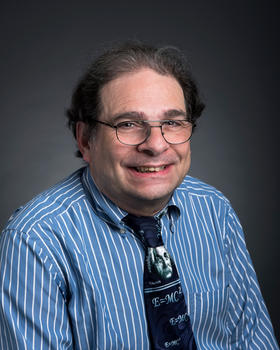
Harold Geller
MAIS ’92
DA ’95
Associate Professor of Physics and Astronomy; Director of Mason Observatory
“I had just completed my sophomore year at Midwood High School in Brooklyn, New York. On the weekend of the lunar landing, I was visiting my cousins at their home in Ventnor City, New Jersey. Our families were gathered around a small black-and-white television in the corner of the den, waiting for those first steps to be taken. It was sometime after 11 p.m. as I recall, when Neil Armstrong finally got ready to egress from the Lunar Excursion Module. Our parents had decided not to stay up for the event.… I was determined to see those first steps being taken, and so I did.
“It was a very momentous occasion for me. I had grown up being fascinated by the space program and followed every launch along the way. I still remember my first visit to the Hayden Planetarium in Manhattan, although I was just five years old. I remember writing a term paper about the investigation of the Apollo 1 disaster, which occurred on January 27, 1967. It was quite a blow to the Apollo program; but we persevered and made it to the moon within the decade, as the late President John F. Kennedy had promised. The lunar landing proved that we, as a nation, could accomplish great things if we worked together and persevered.”
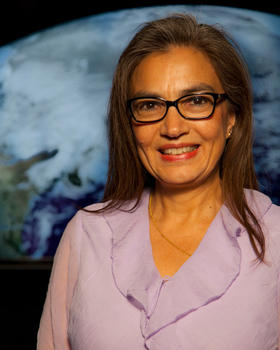
Sandra Cauffman
BS Physics ’88
BS Electrical Engineering ’88
MS Electrical Engineering ’95
Acting Director, Earth Science Division at NASA
“I was 7 years old and remember vividly the event. That’s when I decided I had to go to the moon. Of course, I did not know what NASA was at that age, but I knew there were persons walking on the moon. And I figured, why not me? Eventually I found out that the people walking on the moon were NASA astronauts. That’s when I decided I had to work there. I never made it to the moon, but I have been working at NASA for 31 years (three years as a contractor and 28 years as a civil servant). I have the best job—observing our planet from the vantage point of space and providing societal benefits to humanity.”
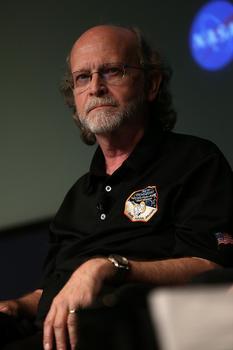
Michael Summers
Professor of Planetary Science and Astronomy; NASA's New Horizons mission to Pluto
“I was 14 years old at the time and a true space nerd. I followed most of NASA’s launches and all of the Apollo missions. But Apollo 11 was obviously special. My parents, four siblings and I stayed up late to watch the moon landing and Neil Armstrong’s first steps. I had never been so glued to the TV, or actually to any event, like that one.
“Watching the astronauts explore the moon made me believe that humanity had a bright future. No other event in my childhood had such a dramatic effect on my choice of a career in space exploration as that one did. If it hadn’t been for the Apollo missions, I would probably have ended up as one of the best farmers in Cunningham, Kentucky.”
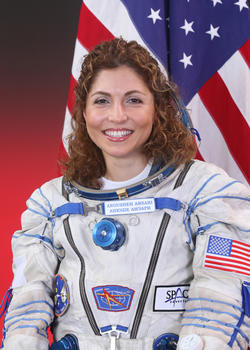
Anousheh Ansari
BS Electrical Engineering ’89
First Female Private Space Explorer, First Iranian in Space
“The moon is the closest celestial object to us that has captured our imagination since the beginning. Fifty years ago, we stepped on its surface and the first thing we did was to look back at our own blue planet and appreciate it so much more. The moon, Mars and other planets and the solar system will attract the explorer in us and inspire us to aim high and to reach beyond all barriers. As we conquer those barriers and learn about the universe, we learn about ourselves and better understand where we are in the bigger picture of existence.”
